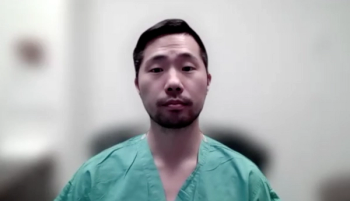
Anatomic radical prostatectomy transforms prostate surgery
In this interview, Christopher L. Amling, MD, FACS, discusses the development of anatomic radical prostatectomy and how the technique transformed the surgical treatment of prostate cancer.
Urology Times® is celebrating its 50th anniversary in 2022. To mark the occasion, we are highlighting 50 of the top innovations and developments that have transformed the field of urology over the past 50 years. In this installment, Christopher L. Amling, MD, FACS, discusses the development of anatomic radical prostatectomy and how the technique transformed the surgical treatment of prostate cancer. Amling is the John Barry Professor and Chair of the Department of Urology at Oregon Health & Science University in Portland.
Please provide an overview of the development of anatomic radical prostatectomy.
The history of the development of anatomical radical prostatectomy is quite fascinating. It's important to know that the first radical prostatectomies were performed via a perineal approach. Hugh Hampton Young, MD, was a pioneer of that approach and performed the first perineal prostatectomy in 1905. In 1947, Terrence Millin, MD from London, England performed the first radical prostatectomy via the retropubic approach, which became more preferred. But radical retropubic prostatectomy was associated with significant morbidity and blood loss. Everybody was impotent after surgery and almost everyone had significant urinary incontinence. So up through the 1970s, radical retropubic prostatectomy was rarely performed for those reasons, and almost all men who had prostate cancer were treated with radiation therapy.
In the late 1970s and into the 1980s, Patrick Walsh [, MD], pioneered development of the anatomic approach to radical retropubic prostatectomy. A series of anatomic studies led to knowledge of the anatomy of the venous structures around the prostate—the dorsal venous complex and Santorini's Plexus. Once there was knowledge of those, the operation could be performed in a relatively bloodless field with improved visibility.
Then there was the question about erections and why nobody recovered them after prostatectomy. It was thought initially that the nerves that control erections ran through the prostate, so the removal of the prostate made everybody impotent. But Dr Walsh questioned that noting that on rare occasions patients would have erections after a prostatectomy. So he knew, or surmised at least, that the nerves must be outside the prostate. During a trip to the Netherlands, he ran into Pieter Donker [, MD], who was doing dissections on stillborn infants to try to identify the nerves around the bladder. He and Dr Walsh got together and mapped out the neurovascular structures around the bladder and the prostate, and really tracked the nerves that are responsible for control of erections—the cavernous nerves. They also identified the pelvic plexus, so the autonomic nervous supply in the pelvis for erections was identified.
Lastly, it was identified that the striated urethral sphincter was important for preservation of continence. Early when the operation was performed, there was no knowledge of that anatomy and that the sphincteric complex needed to be preserved for men to regain their continence after radical prostatectomy. So it's really those 3 things: identifying the vasculature around the prostate and being able to control it to improve visibility, identifying the nerves and the neurovascular bundles, and better knowledge of the striated urethral sphincter to allow for preservation of continence. With this knowledge, prostatectomy could now be performed with less morbidity.
Why does anatomic radical prostatectomy belong on a list of innovations in urology?
Anatomic radical prostatectomy really transformed radical prostatectomy from a very morbid operation with high risk, performed rarely, to one that became a commonly utilized treatment for prostate cancer. It was the identification of the important anatomy that allowed this surgical procedure to develop and progress over the years.
How has anatomic radical prostatectomy improved the treatment of patients with prostate cancer?
Anatomic radical prostatectomy allowed for the opportunity to receive surgical treatment with significantly less morbidity. The ability to have surgery as an option for treatment of prostate cancer was a result of the development of anatomic radical prostatectomy.As technology allowed progression from open prostatectomy to laparoscopic prostatectomy, and then to robotic prostatectomy, all were based on the foundation of a clearer understanding of the anatomy of the prostate and the structures around it. The anatomic approach has continued to be utilized even for less invasive approaches to radical prostatectomy.
Newsletter
Stay current with the latest urology news and practice-changing insights — sign up now for the essential updates every urologist needs.

















